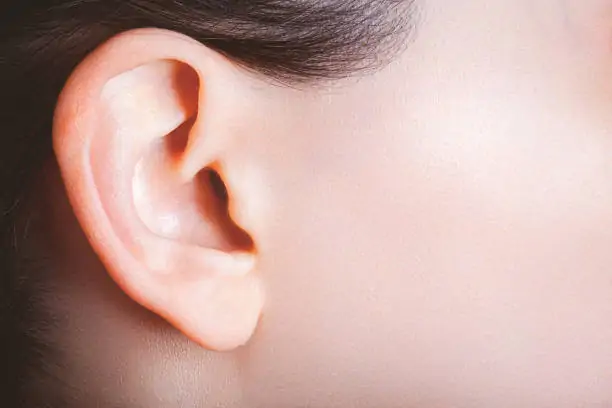Please call 754-277-4120 to schedule an appointment at our convenient location in Fort Lauderdale. Dr. Michael Frederick also serves the surrounding Broward County towns of Weston, Hollywoood and Cooper City. We also welcome patients from the Miami area, including Aventura and Coral Gables. Dr. Frederick also has strong ties to our Palm Beach neighbors from Boca Raton, West Palm Beach, Palm Beach Gardens and Jupiter.
Ear lobe repairs are the most common as over time the weight of earrings often stretches out the hole with time.
Ear lobes grow with age so reductions are common in facelift patients. An otoplasty is commonly performed on patients with prominent ears that stick out to the side and is performed through a small incision hidden behind the ear.

Closed
Types of Ear Surgery
- Ear Lobe Repairs: Ear lobe repairs are very common and occur when the weight of a patient’s earrings make the hole too large or split through the ear lobe. Ear lobe repairs are performed under local anesthesia and the sutures dissolve in 5-7 days.
- Ear lobe reduction: Ear lobes tend to get larger with age, lose volume and develop folds. Sometimes this can be quickly fixed with a small amount of filler or fat grafting into the ear lobe. Sometimes the ear lobe needs to be reduced surgically. This is commonly done at the same time as a facelift if desired.
- Pixie ear repair: A pixie ear develops when a previously hanging ear lobe becomes an attached ear lobe after facelift surgery. This can usually be avoided with proper technique during the facelift. Dr. Frederick will need to assess your anatomy in person to select the optimal technique in fixing an attached earlobe.
- Cauliflower ear repair: A cauliflower ear occurs after there is trauma to the ear that causes a hematoma (a blood collection under the skin). If the blood is not drained immediately it causes inflammation that can permanently destroy the shape of the ear. If you have developed a hematoma it is important that it be treated immediately and that a bolster dressing be placed so that the hematoma does not re-form. Treatment includes elevating the skin, reshaping the cartilage much like a sculptor and then placing the skin back over the new constructed ear cartilage with bolsters in place to maintain the new desired shape.
- Otoplasty: An otoplasty is a surgical repair of an ear that someone was born with. An otoplasty is most commonly performed in patients with prominent or wide ears. An otoplasty can be performed completely under local anesthesia while awake.
Techniques
There are three main techniques used in otoplasty to fix a prominent ear. All three are done through an incision hidden on the backside of the ear itself. Depending on your anatomy, one or all three of the otoplasty techniques may be used to improve the appearance of your ear.
- Furnas sutures: The is an otoplasty technique that uses sutures to pin the ear back down along the skull so that it does not protrude.
- Moustarde sutures: This technique uses sutures to bend the cartilage and re-create the natural folds of the ear. This creates the fold called the scapha.
- Conchal bowl resection: Occasionally the above suture procedures are not significant enough because the concha (the inner bowl shaped portion) is too large. A small piece of this cartilage can be removed from the incision behind the ear in an otoplasty to decrease its size and create a more normal size and shape.
Candidates
Otoplasty patients typically develop prominent ears in childhood and otoplasty is often performed as early as 5 years old, although it can be performed at any age. It is ideal for patients whose folds in their ear have flattened and stick out prominently away from the skull. Ear lobe changes occur over time and are typically performed in adults.
Complimentary Procedures
Ear lobe surgery is commonly performed with with a facelift although it can be combined with any other procedure.
Recovery
Recovery is very simple and has minimal pain. All of the sutures are dissolvable. Although swelling will persist slightly, visual down time, the time after which people do not notice someone had surgery, is usually 1 week at most.
FAQs
HOW DO I RE-PIERCE THE EAR LOBE AND WHAT DOES IT COST?
Ear piercing is included with the cost of any ear lobe reduction or ear lobe repair! It is done under local anesthesia in the office. All you need to do is bring a stud style earring with a straight back. Once placed you have to wear the earring for 2-3 weeks without removing it.
WHEN CAN I RE-PIERCE MY EARS AFTER AN EAR LOBE REPAIR?
It is recommended to wait 6 weeks after an ear lobe repair before re-piercing an ear lobe, especially if you are replacing the earring in the same location. It is recommended that the new location be in a slightly different spot to decrease the chance of recurrent stretching.
HOW MUCH DOES AN EAR LOBE REPAIR COST?
The cost of an ear lobe repair is typically $550 for one ear and $950 for both.
WHAT TYPE OF ANESTHESIA IS PREFERRED FOR AN EAR LOBE REPAIR OR OTOPLASTY?
An ear lobe repair or otoplasty is best done entirely under local anesthesia. This is the preferred method as during the ear lobe repair or otoplasty procedure the patient can see the result in real time and request more or less of an adjustment. If desired, the ear lobe repair or otoplasty can always be done under IV sedation or general anesthesia as well.
*RESULTS MAY VARY
